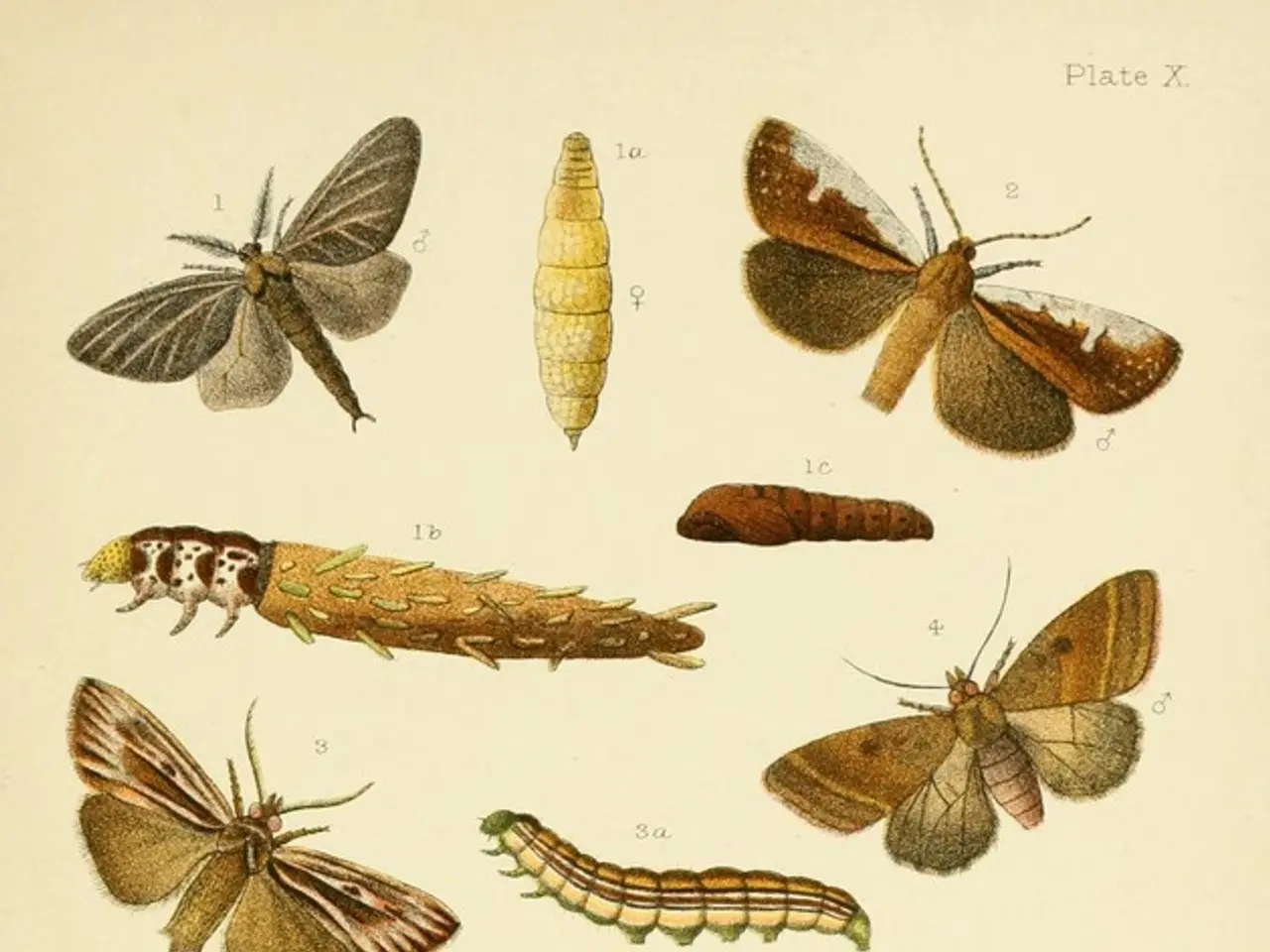Exciting methods to understand the reproduction patterns of tiny creatures in the insect world
The life cycle of a butterfly is a fascinating journey, marked by four distinct stages: Egg, Larva (Caterpillar), Pupa (Chrysalis), and Adult. Each stage involves specific processes that contribute to the butterfly's transformation.
- Egg Stage: Adult female butterflies lay eggs on specific plants called host plants, often on the underside of leaves. Eggs are tiny, with various shapes, and have a protective shell. They hatch in about 3 to 21 days depending on species and conditions.
- Larva Stage: When the eggs hatch, caterpillars emerge. These caterpillars immediately consume their eggshell and then begin feeding on their host plant leaves. They grow rapidly, periodically shedding their exoskeletons to accommodate their increasing size.
- Pupa Stage: After reaching full size, the caterpillar finds a safe place to undergo metamorphosis. It forms a chrysalis (butterflies) or cocoon (moths). Inside the chrysalis, the caterpillar’s body breaks down into a “tissue cell soup” and reorganizes into an adult butterfly. This stage is mostly inactive externally but involves intense internal transformation.
- Adult Stage: The adult butterfly emerges from the chrysalis with soft, wet wings. It pumps hemolymph (a fluid) into its wing veins to expand them. After wings dry and harden (about 1-2 hours), the butterfly begins flying, feeding on nectar using its proboscis, and eventually mates to lay eggs to start the cycle again. Adult butterflies typically live 2-4 weeks, although some species live longer.
This four-stage life cycle demonstrates complete metamorphosis, illustrating one of nature’s most remarkable transformations.
For those interested in hands-on learning, there are various craft ideas available. You can create a frog life cycle spinner, butterfly spin wheel, or a paper plate butterfly life cycle. For a more interactive edible activity, try making a butterfly life cycle using fruit, vegetables, or candy.
If you're keen on exploring the world of invertebrates further, consider making an easy bug house using an empty drink bottle and some sticks, as demonstrated by Red Ted Art. Or, delve into the world of worms with a homemade wormery.
Britain is home to over 25,000 species of known invertebrates, including minibeasts such as spiders, slugs, beetles, and earwigs. These small creatures play a vital role in the ecosystem, serving as decomposers, feeding on dead leaves and other waste matter, and releasing nutrients into the soil. They are also an important part of the food chain, being eaten by birds and small mammals.
Bees, butterflies, and moths are particularly important, as they spread pollen, which fertilizes flowers. This process is crucial for plant reproduction and the continued growth of ecosystems.
This article was last updated on May 21, 2025, by Emma Vanstone.
[1] Britannica, T. E. (2021). Butterfly. Encyclopædia Britannica. [2] National Geographic Society. (n.d.). Butterfly life cycle. National Geographic Kids. [3] The Butterfly Conservatory. (n.d.). The life cycle of a butterfly. The Butterfly Conservatory. [4] University of Arizona. (n.d.). Metamorphosis. University of Arizona. [5] The Xerces Society. (n.d.). Monarch butterfly life cycle. The Xerces Society.
- Kids can create engaging activities to learn about the life cycle of a butterfly, such as making a frog life cycle spinner, butterfly spin wheel, or a paper plate butterfly life cycle.
- For an interactive edible activity, consider making a butterfly life cycle using fruit, vegetables, or candy.
- If you're interested in exploring the world of invertebrates further, one can make an easy bug house using an empty drink bottle and some sticks, or create a homemade wormery.
- By studying the life cycle of a butterfly, kids can appreciate the exciting transformation from caterpillar to adult butterfly, which is a part of nature's wonder.
- Gardening enthusiasts can help cultivate a home-and-garden lifestyle that supports various invertebrates, such as bees, by planting native flowers and providing a suitable habitat.
- With an understanding of the life cycle of butterflies and their role in pollination, one can contribute to education-and-self-development by gaining knowledge about the importance of these small creatures in maintaining healthy ecosystems.




